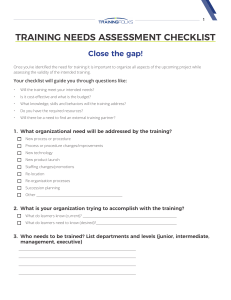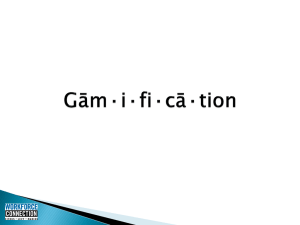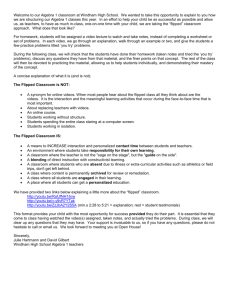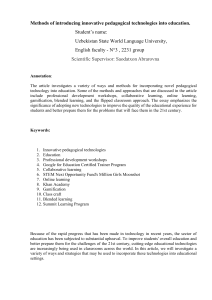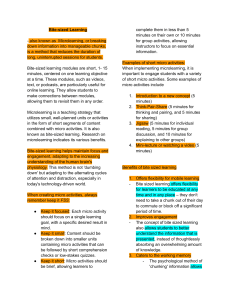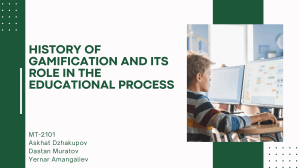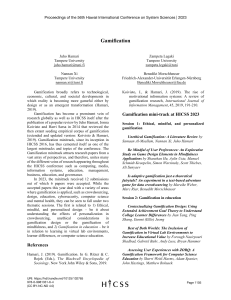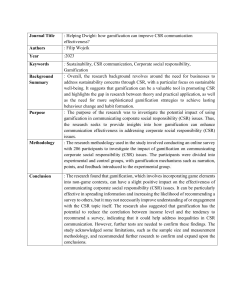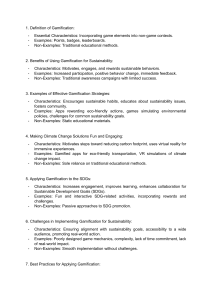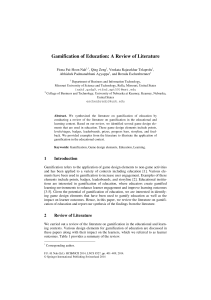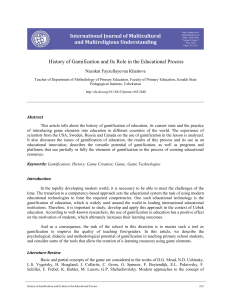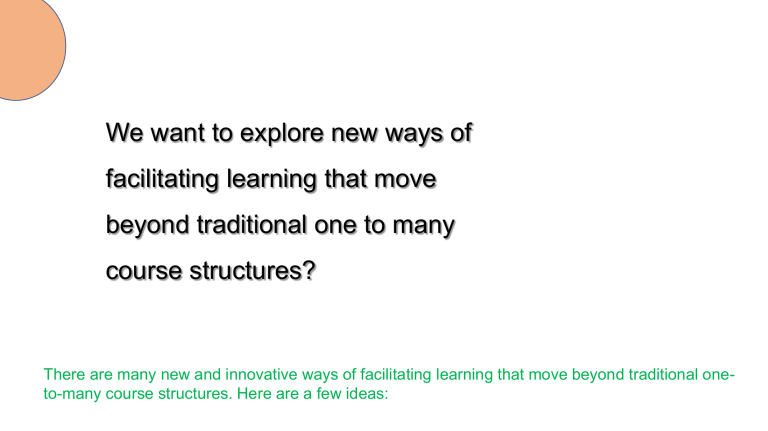
We want to explore new ways of facilitating learning that move beyond traditional one to many course structures? There are many new and innovative ways of facilitating learning that move beyond traditional oneto-many course structures. Here are a few ideas: 1.Collaborative Learning Collaborative learning involves students working together in small groups to solve problems, discuss ideas, and create new knowledge. This can be facilitated through group projects, peer-topeer teaching, or online discussions. 2.Flipped Classroom Flipped classroom involves students learning content at home through pre-recorded lectures or online resources, and then coming to class to engage in discussion and problem-solving activities. This approach puts more emphasis on studentcentered learning, as students take more responsibility for their own learning. 3.Gamification Gamification involves using game elements, such as points, badges, and leaderboards, to motivate and engage students in the learning process. This can make learning more fun and engaging, and can 4.Microlearning Microlearning involves breaking learning into small, bite-sized chunks that can be completed in a short amount of time. This can be done through short videos, quizzes, or interactive activities, and can help students learn more efficiently and effectively. To create an innovative learning experience that leverages your active and engaging community to promote social learning, consider the following steps: 1.Identify your community's interests and passions Conduct surveys, social media polls, or focus groups to identify the areas of interest and passions of your community members. This will help you tailor the learning experience to 2.Create a social learning platform Develop a platform that allows community members to connect, collaborate, and share their knowledge and experiences with each other. This platform can include discussion forums, blogs, video tutorials, and other resources that promote social learning. 3.Offer personalized learning paths Provide personalized learning paths that are tailored to each individual's interests and learning style. Use data analytics and artificial intelligence to recommend courses, resources, and activities based on each person's
